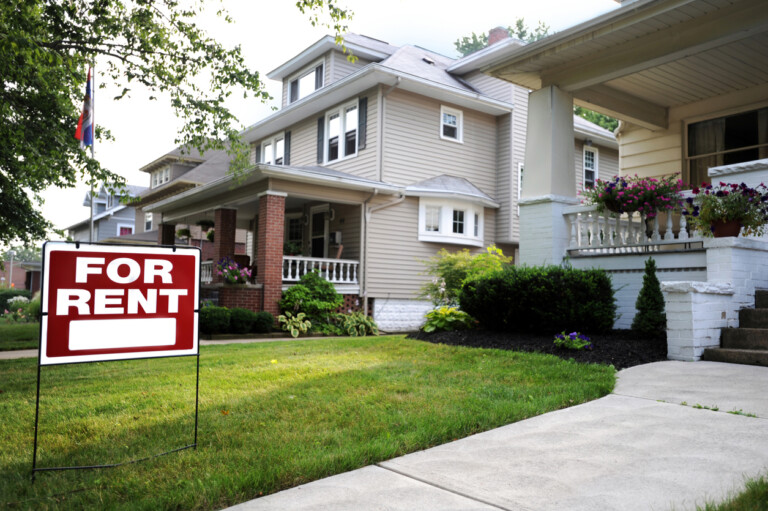A growing number of developments are combining both commercial and residential space within the same building – there may be grocery stores, restaurants and offices on the lower levels of a building, and several floors of residential apartments directly above them. With this sort of combination, a typical concern is how the commercial space can keep its autonomy from the residential portion of the building, while matters of mutual concern can still be addressed.
There are two main methods by which developers may organize a mixed use building to ensure that there is separation between its residential and commercial components. One is through the use of air space subdivision, while the other is through the creation of separate sections within the same strata corporation.
Air Space Subdivision
Air space subdivision is becoming increasingly popular with developers, owners and mortgagees of mixed-use real estate projects. The main attraction of air space subdivision is that it creates two separate legal parcels within the same building. This means that different parties can own the residential and commercial components of the building, and as a result, air space subdivision provides more flexibility for long-term investment opportunities and use.
In a typical air space subdivision, a strata plan is filed only with respect to the residential portion of the building, so that it is only the residents in the building who are members of a strata corporation. With air space subdivision, the commercial portion of the building becomes a neighbour of the residential portion of the building, and is not subject to the residential strata corporation’s bylaws, rules and resolutions. This will likely be attractive to an owner developer who wishes to retain ownership of the commercial component of a building, but sell the strata lots in the residential portion. The marketability of the commercial portion will also be enhanced as most REITs, pension funds and other institutional investors will simply not consider purchasing strata-titled property.
With air space subdivision, the owner developer can operate the commercial space as it sees fit, and is not required to involve a strata corporation in its decision-making. In addition, the owner developer retains the flexibility to keep the commercial portion of a building for a period of time, or file a strata plan with respect to the commercial units, and then sell the commercial strata lots individually.
Air space subdivision is three dimensional subdivision governed by Part 9 of the Land Title Act. To create air space parcels, an air space subdivision plan is first prepared by a BC Land Surveyor. Usually, but not always, the plan is prepared once the building structure has been substantially completed. Once prepared, the plan is filed in the Land Title Office against an existing parcel of land to create titles to one or more three-dimensionally defined air space parcels plus a separate title for that portion of the original lands not included in the air space parcel(s), known as the “remainder” parcel.
Once the air space subdivision plan is accepted for registration in the Land Title Office, each air space parcel and the remainder parcel is given a separate title and is treated like any other parcel of land in BC – each can be transferred, leased, mortgaged, and otherwise dealt with like any other parcel of land. An air space parcel may be further subdivided in accordance with the Strata Property Act.
Having separate titles for the residential and commercial components of the building creates a number of practical benefits. The actual division of the residential and commercial elements often makes it easier to delineate cost allocation for non-shared building components. To address matters of mutual interest, and typically to comply with municipal and building code requirements, the developer, in its dual or multiple capacities as owner of the residential and commercial parcels, enters into an Air Space Multi-Easement Agreement in a form approved by the municipality. Among other things, the Agreement provides reciprocal easements between the owners for, as applicable, pedestrian access, vehicular access, service connections, fire safety and emergency systems, structural support, future construction, maintenance, repair and the use of other common building services, such as sewer, garbage, water and electrical services.
While having a number of benefits, the up-front costs of an air space subdivision involving surveyors, lawyers, building code specialists and other consultants can add tens of thousands of dollars in soft costs to a development. In Vancouver, developers must include fees currently ranging from $27,701 to $55,299 when submitting an air space subdivision proposal to the City for its review. Developers must consider the costs involved when deciding whether to separate residential and commercial components of a building through the use of air space subdivision or through separate sections within a strata corporation.
Examples of Vancouver projects in which a residential strata plan exists within a single air space parcel, with the commercial component in the remainder, include the Olive development (16th and Cambie) and L’Aria (Seymour and Robson). More complex, multiple air space parcel developments include Central City in Surrey and The Crystal in Burnaby.
Separate Sections in a Strata Corporation
The alternative to separating commercial and residential components by way of air space subdivision is to create separate sections for the residential strata lots and commercial strata lots within a single strata corporation. In this scenario, the entire building is subdivided into strata lots (each with its own title) and common property, in accordance with the Strata Property Act. An owner developer may, in the strata corporation’s bylaws, create separate sections under Part 11 of the Strata Property Act to ensure that the residential section and commercial section are each autonomous and self-governing in respect of matters that relate solely to such section. For matters that relate to all owners in the strata corporation, the sections may have representation on the strata council.
After creating sections, a strata corporation retains its powers and duties in matters of common interest to all owners. With respect to matters that relate solely to the section, each section has the same powers and duties of the strata corporation, and functions like its own separate strata corporation within the strata corporation. A section can be set up to hold its own elections, and can have an executive council that performs for the section the same functions that a strata council performs for the strata corporation. A section may remove, replace and appoint its own executive council members and members of the strata council.
The independence of a separate section affects virtually all financial and related matters. A section can create and approve of its own annual budget with its own operating fund and contingency reserve fund for common expenses of the section, including expenses relating to limited common property designated for the use of all of the strata lots in a separate section. A section may collect and administer its own strata fees, assess a special levy on all the strata lots in the section, and have its own trust accounts to manage its financial affairs independent of the strata corporation. A section is responsible for the repair and maintenance of limited common property designated for the exclusive use of strata lots in the section.
The strata corporation has an annual budget for expenditures that relate to and benefit all strata lots. Some of the expenditures that would benefit both the residential and commercial strata lot sections may be landscaping, insurance, and the parking structure costs. The function of the strata council is to deal only with matters of mutual concern. The strata corporation maintains an operating fund and a contingency reserve for these matters only.
A section is treated as a separate legal entity. A strata corporation has no liability for contracts made, or debts or legal costs incurred, by a section. A section may borrow money, grant security charging its interest(s) in land whether by mortgage or otherwise, and enter into contracts in its own name.
While the strata corporation’s bylaws apply to each section, the bylaws can be amended by a section with respect to matters that relate solely to that section. A section may also adopt and enforce its own bylaws and rules. The strata corporation may not pass a bylaw or rule affecting a section unless the owners in the section also approve the bylaw or rule by a vote separate from the vote of the strata corporation. One section may not impose a bylaw or rule on another section.
Despite the relative degree of independence separate sections have, the use of separate sections will not help solve all conflicts between the residential and commercial components of the building. One issue that repeatedly arises where there is a commercial section of a building relates to the signage that is allowed on the exterior of the building. Under the Strata Property Act, the outside walls of the building are considered to be common property, and fall under the rules of the strata corporation rather than a separate section. However, the owners of commercial strata lots and the residents who live above this commercial space will likely have very different ideas about what kind of signage should be permitted. In this scenario, air space subdivision provides a better solution than dividing the building into sections.
*****
There are a number of factors for developers to consider when deciding whether to separate residential and commercial components of a building through the use of air space subdivision or through separate sections within a strata corporation. When developing a mixed-use project, these factors must be considered at the outset in consultation with the developer’s professional advisors to ensure that the desired structure is implemented effectively.



